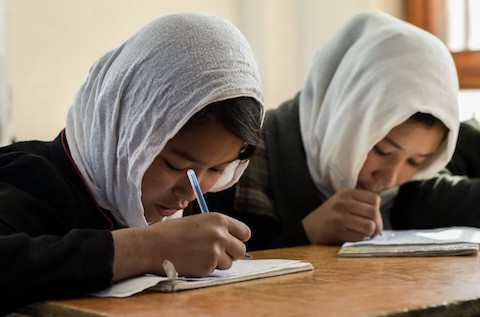
GCED Basic Search Form
Quick Search
You are here
News

By M Niaz Asadullah, Professor of Development Economics at the University of Malaya, Malaysia and Southeast Asia Lead of the Global Labor Organization (GLO).
Since the return of the Taliban to power, concerns are growing over girls’ education in the Islamic Emirate of Afghanistan. Many Taliban Ministers were educated in madrasas in neighboring Pakistan. It is likely, therefore, that the emphasis on Koranic education and Islamic teachings will rise up again in Afghanistan. Many are worried that secular schools will shut down. Girls may end up presented with a choice: sit at home or be sent to madrasas.
But an emphasis on an education system compliant with the Shariah system does not necessarily mean an end to girls’ education. Taliban leaders now recognize the need for girls’ schooling but insist on complete gender segregation. This is confirmed by a major shift among the leadership which recently announced that Afghan women deserve to be in universities just as men, even if only on the condition that university classrooms remain strictly single-sex and aided by same sex teachers. Their demands also include restrictions on dress codes or forced purdah practice and ban on women’s participation in sports.
To reach the university level of education, girls will need to work their way through primary and secondary school. Similar to other countries with a large Muslim population such as India, Nigeria, and Turkey, Afghanistan already has a nationwide network of madrasas to educate children, whose role is likely to increase under the current regime. There are 5000 registered madrasas and many more non-madrasa schools. Non-state madrasas remain largely undocumented but we do know that some have opened up to girls’ education in recent years. However, whether faith-based schools teach religious education as well as secular content depends by country and school, as the 2021/2 GEM Report on non-state actors due out this December will explore.
The Talibans are not alone to mix education with religion and demand culturally appropriate forms of education for girls. Many other leading Muslim nations continue to ban co-educational schools and to require mandatory purdah practice. In Saudi Arabia, for instance, the government prohibits any mixing of the sexes and even forces private international schools to educate girls in a fully gender segregated environment. Sports such as football are also not allowed for female university students. Yet these restrictions have not held back progress in female education in Saudi Arabia, where equal numbers of boys and girls are in school and universities. Even in other Muslim countries with an emphasis on Islamic schooling, gender parity in education has been achieved. A case in point is Bangladesh, where partnering with thousands of registered madrasas was key to achieving gender parity in secondary school participation. This is also true for Indonesia, the most populous Muslim country in the world.
One key fact is that the Taliban are returning to a very different education landscape than the one they left. Millions of girls returned to school in 2002, after the fall of the Taliban rule. Women’s visibility in public life also increased over that time, including with appointments to political office. The last Minister of Education before the change of regime was a woman, Ms. Rangina Hamidi, who spoke passionately about the importance of girls’ education when on the platform for the GPE Global Education Summit this summer. The past two decades saw the participation rate in higher education improve as well.
Despite these gains, as in other parts of South Asia, such as the Sindh province of Pakistan, girls’ schooling remains less than universal. In Afghanistan, conditions of war, poverty and poor quality schooling have created an extremely challenging environment for girls’ education. The reality is that, despite USD $ 2 trillion of investment to rebuild Afghanistan since 2001, two-third of girls remain out of secondary education in the country. Even worse, those lucky enough to be in school during that time learnt little. This recent shocking GEM Report graph shows the extent of the work still to be done. It shows that Afghanistan is only now where India was twenty-five years ago as regards gender parity in primary completion.

Against this backdrop, the biggest concern is that these past gains are not lost. Even after 20 years of the US administration of Afghanistan, the country remains a conservative society with deep respect for Islamic traditions. As this blog shows, there is enormous diversity in the way that girls are schooled in different Muslim communities around the world. The debate about the future of education in Afghanistan should not be about madrasa or schools, therefore. International development partners instead should demand that no Afghan girls are left outside the education system, focusing all their energy on protecting the trends in progress so far made on equity and quality wherever that education may take place.
URL:
